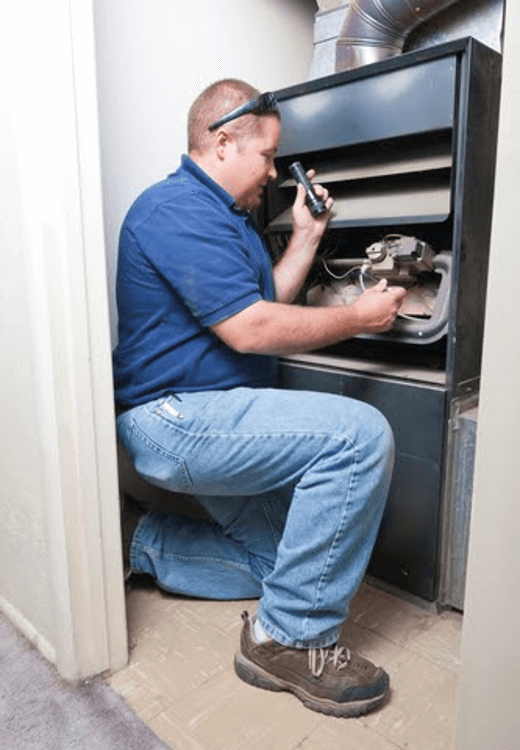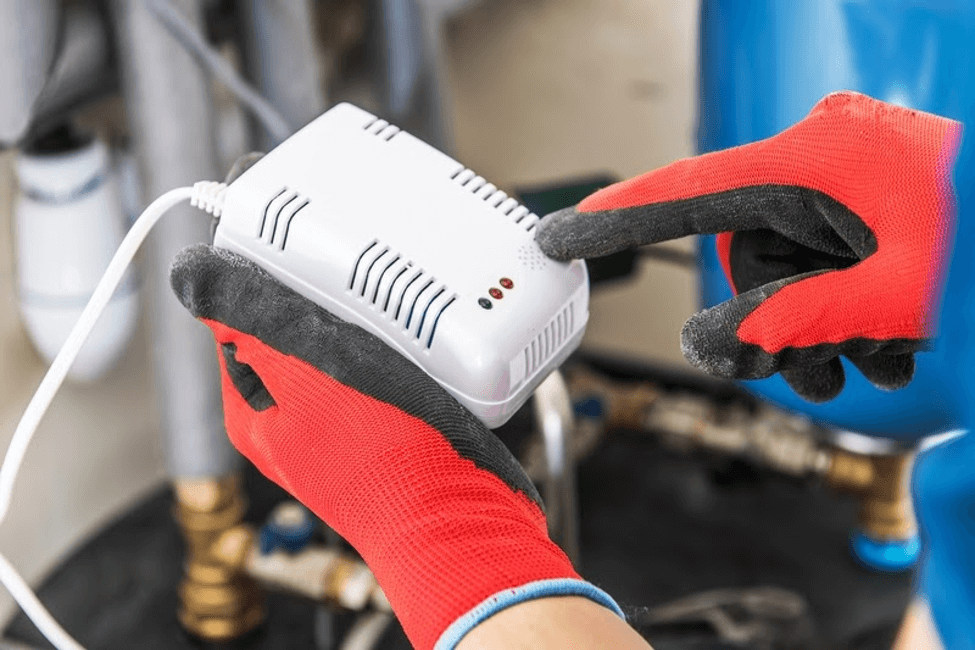Help You?
CLICK TO LEARN MORE ABOUT IRA REBATES AND TAX CREDITS
WHAT DOES A CRACKED HEATER EXCHANGER MEAN FOR MY FURNACE?
What Does a Cracked Heat Exchanger Mean for My Furnace?

That means we shut it off, and it can’t be turned back on until the problem is solved. But, since you can’t really fix a cracked heat exchanger, it means buying a new furnace.
Since most heating breakdowns happen in the dead of winter, you find yourself scrambling to get a replacement in the freezing cold.
Fortunately, Compass Heating and Air is here to help. We can get you back up and running in no time. But, it helps a lot to understand what’s going on and why.
In this article, we’re answering some of the most frequently asked questions about this common, and potentially catastrophic, HVAC problem.
What Does a Heat Exchanger Do?
The heat exchanger is the part of your furnace that’s responsible for generating heat. The fuel — usually oil or gas — your system uses goes through the combustion process inside this component. When it burns, it produces heat. Then, the blower motor pushes that heat out and into the ducts.
Now, a natural part of the combustion process involves producing carbon monoxide. You know this, at least, as the reason you need special sensors in your home.
This gas is lethal if you inhale too much of it. But, it’s also colorless and odorless. So, unless you have a monitor that detects it, enough of the gas can build up in your home to give you carbon monoxide poisoning.
Fortunately, this isn’t a problem when everything works properly. In typical operation, your furnace expels this gas directly through the exhaust.
This way, it exits your home safely without ever entering any living space.
But, when the heat exchanger cracks, the carbon monoxide can seep out and build up in your house.
How Does it Crack?

A problem elsewhere with your system can cause these temperature swings. Usually, what happens is that heat backs up in the furnace.
Yes,this appliance produces heat. But, it’s not meant to store it. If too much thermal energy builds up, it can damage the components.
So, as a failsafe, a furnace will switch to cold air when there’s a threat of overheating.
But, this is only a temporary measure. If you don’t do anything about it, the furnace keeps getting really hot, then really cold, then really hot again.
Eventually, this causes the breakdown we’re talking about here. And, we’ll get into how to prevent it a little later. For now, let’s see why you need to replace the unit once this happens.
Why Can’t You Repair a Cracked Heat Exchanger?
That’s a lot of information at once. Let’s break it down.
Health Hazards

You can’t see the heat exchanger because it’s on the inside of the unit. So, it’s virtually impossible to spot a crack.
Usually, the only way you can tell it’s there is when a tech takes readings from the unit and discovers unusually high carbon monoxide levels.
That means that if the repair doesn’t take, you may not realize it until too late. There’s no way to tell if the part is once again leaking poisonous gas.
And, since it’s one big ceramic piece, if the patch doesn’t take, it’s likely to crack even worse.
Place Inside the Furnace
And, since we can’t repair it, you’re also paying for a new part.
When you add in that cost plus all the labor to disassemble and assemble the unit, it’s likely going to cost about the same, if not more, as a new furnace.
If your unit is already a few years old, then it’s especially more cost-effective — even if it’s still expensive — to invest in a new one when you just may have to do that anyway in a few years.
Even with a newer unit, it makes more financial — as well as health — sense to go with a new one.
It’s tough news to get, we know. So, here are some ways to prevent the problem.
How Do You Prevent a Cracked Heat Exchanger?

The best way to prevent a cracked heat exchanger is to prevent your furnace from blowing cold air. To do this, you want to keep your vents clear and your system in great condition. That way, you’re not stressing the components with sudden shifts from extreme hot to extreme cold and back again.
Since that feature is a failsafe, you want to get to the root of that problem.
We go into much more detail here. But, for now, we’ll go over these points briefly.
In short, make sure you keep all your vents clear. And, change your air filter regularly.
Blocked vents and clogged air filters prevent air from flowing the way it should through your system. When you restrict that airflow, you cause the backup.
It’s also essential to get a check-and-clean every fall before you turn on the heat. If you haven’t gotten one already, you can still have your system checked out.
The check-and-clean is an opportunity to spot any problems while they’re still small. If there’s an airflow issue or other concern that can cause more significant worries, a tech can fix it before it gets out of control.
Finally, make sure you’re using a trusted, reliable HVAC company! Sad to say, but cracked heat exchanger scams are common. Make sure whoever is inspecting the system comes with great reviews and a stellar reputation.
In the Fox River Valley, you can trust Compass Heating and Air to keep your system running and your home safe. We provide expert furnace repair and replacement in Elgin, IL with an A+ BBB rating and hundreds of five-star Google reviews.
Call us today at (630) 504-8688 for an inspection, or if you have any concerns about your heating and cooling.

